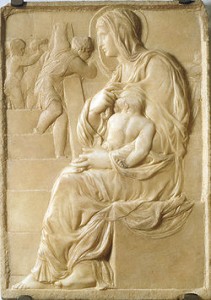Between Apprentice and Master
 This session focuses on the formative years in the life of an aspiring artist in early modern Europe. It centers on the challenging threshold period between completion of an apprenticeship, often in the early teens (but there is much variability) and the age of eligibility to become a master, usually in the early to mid 20s. Poorly understood, this awkward, in-between stage has left scant traces in the documentary record and may be quite different in southern and northern artistic centers. Our notions are formed by highly colored anecdotes in biographies of artists, few images, and rarely correlated with studio/workshop scenarios based on painstakingly documentary research.
This session focuses on the formative years in the life of an aspiring artist in early modern Europe. It centers on the challenging threshold period between completion of an apprenticeship, often in the early teens (but there is much variability) and the age of eligibility to become a master, usually in the early to mid 20s. Poorly understood, this awkward, in-between stage has left scant traces in the documentary record and may be quite different in southern and northern artistic centers. Our notions are formed by highly colored anecdotes in biographies of artists, few images, and rarely correlated with studio/workshop scenarios based on painstakingly documentary research.
Existing scholarship on the workshop simultaneously yields valuable information and exposes a murky understanding of who did what and under what terms. We use freely terms such as “pupil “or “teacher” but how do these concepts map on to the historical situation? Successive apprenticeships, and training for specialized skills—such as architectural perspective—occurred in this period, but under what conditions? Some young artists were paid for work by the day, or for a term. But what do we know about the status and roles of the various youths who were called garzone, discepoli, knapenknechten or assistants? Today we ascribe execution of works of art as “workshop” or “pupil of ” or “assistant;” who, more exactly, do we mean? How did high level, such as court, patronage affect how training was organized?
During the 16th century the professional identification of painters, sculptors and architects with the artisanal or mechanical arts grew increasingly unstable, and complicated by aspirations to the status of the liberal arts; guild strictures increased in the north, while the structures and mentalities of the academy infiltrated the traditional workshop in the south. The pivotal Wanderjahre of the artisan—whose post-apprenticeship travels were driven by the expediency of acquiring practical seasoning and earning one’s keep,—became assimilated to the peregrinatio academia of the university student, became a curriculum, a studioso corso to “study” what were now set up as the paradigmatic works of art in Rome or Venice. Trainees became students, and a cohort of young workers learning their craft in a workshop transforms into an Academy. Zuccaro planned a hostel for young artists who came to study in Rome.
We invite papers that raise questions, and investigate this liminal phase when the artist is no longer an apprentice, but not yet, and perhaps never, a master. Papers addressing the circumstances and aspirations of Northern artists from the 15th century onward that offer telling corollaries to the later academy system, as well as studies in diverse media such as tapestry, sculpture, manuscript illumination, and stained glass are also welcome.
Contact : gfeigenbaum@getty.edu or awoollett@getty.edu

Leave a Reply
You must be logged in to post a comment.